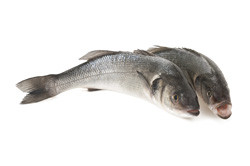Microbes help juvenile fish
European aquaculture is confronted with a number of 'bottlenecks' that limit production, which needs to be addressed. One challenge is the negative effect that microorganisms have on the production of juvenile fish. Problems caused by microorganisms, however, could be resolved by making use of the natural symbiotic relationship that exists between the host organism and the microbial community (MC) it supports. This relationship, which has evolved over millions of years, works to benefit both the host and the MC. Funded by the EU, the 'Microbes as positive actors for more sustainable aquaculture' (PROMICROBE)(opens in new window) project investigated cod, sea bass and tilapia, and their interaction with the MCs they contain. These species represent carnivorous fish versus omnivorous fish, as well as marine and freshwater fish. The aim of the initiative was to untangle the complex relationship that exists between the different components of the aquaculture system. Better understanding this will enable scientists and fish farmers to work with rather than against the bacteria present in the system, resulting in a reduction in the use of antibiotics. Scientists wished to learn how an MC evolves as the host passes through its different life stages and how it is influenced by changing environmental conditions. In addition, they wanted to understand the effect of microorganisms on the host's metabolism and its susceptibility to disease. Environmental factors such as salinity and feed composition have a significant effect on MC composition. Therefore, researchers investigated to what degree it was possible to influence MC composition and activity. The consortium also studied how microorganisms present in aquaculture rearing systems can be used to retain organic waste and nutrients, thereby reducing environmental impacts. The project recommended changes to culturing techniques and feed additives. These changes will lead to higher survival and growth rates in larvae and juvenile fish and contribute to greater resistance to disease. Results from PROMICROBE were used to develop new procedures for farming fish in a biologically as well as economically stable way. This will help to protect the aquatic environment while helping the aquaculture industry to compete in the global marketplace.







